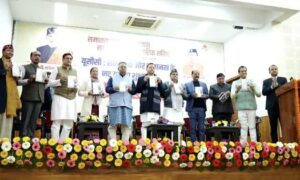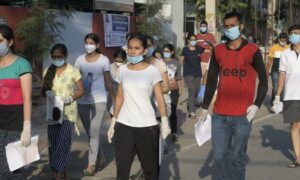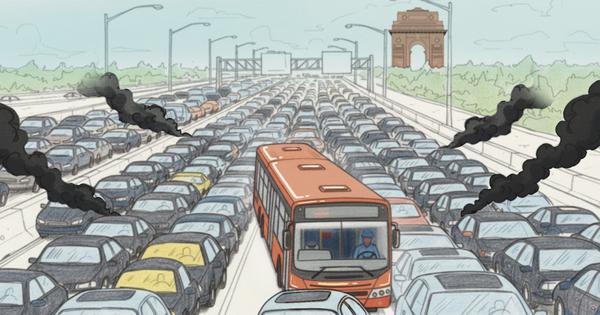
In January 2024, Delhi’s average air quality index was “abnormally high”. Low wind speeds slowed the dispersal of pollutants, leaving the city with its worst January air in five years.
In its office in central Delhi, members of the Commission for Air Quality Management convened for their first meeting of the year. The central government formed the body in 2021, under the aegis of the ministry of environment, to ensure better coordination of air quality management between Delhi and the National Capital Region, as well as adjoining states in matters of air pollution that affected the capital. To this end, it was vested with the power to issue directions to authorities in this region.
The commission reviewed 16 “agenda” items that day: for instance, it received updates from states about their action plans to deal with stubble burning, discussed plans for greening the National Capital Region through the planting of “air pollution tolerant species”, and plans to control e-waste burning.
Only two agenda items that were discussed dealt with transport: one on ensuring that intercity buses that entered Delhi ran on clean fuels, and another on complying with Supreme Court directions to mitigate vehicular emissions.
Two months later, by mid-March, by which time the air quality had improved substantially, the commission reconvened. This time, the subject of formulating plans with neighbouring states to manage the burning of stubble was a major point of discussion, recorded as an entire page and a half in the minutes – the longest discussed agenda item in that day. The transport sector did not come up in this meeting.
The next time the commission met in July, it discussed further plans to shift inter-city buses to cleaner fuels – and then moved on to other matters unrelated to transport.
By the time the CAQM met again in November, the city was seeing its worst air-quality levels ever recorded. The commission took a few short-term decisions to tackle the problem, focusing on curbing stubble burning, managing construction dust and scheduling Graded Response Action Plans to respond to spikes in pollution. With respect to tackling pollution from the transport sector, it directed that road users should pay higher parking charges every time air quality dropped to “very poor”, in order to discourage the use of private vehicles.
Across all four meetings in 2024, the question of vehicles remained on the margins of the CAQM’s discussions. This was surprising, given that the sector contributes the most to Delhi’s toxic air – according to different studies, between 18% and 40% of the city’s PM 2.5 levels.
But in fact, this lack of attention to the transport sector was not only a feature of the commission’s 2024 meetings.
Scroll accessed the minutes of its meetings between 2021 and 2025, and found that it had consistently paid limited attention to the transport sector.
In a total of 24 meetings in this period, 179 “agenda” items were discussed in all. Of these, only 22 were related to transport. In fact, the transport sector received only a little less attention than the question of stubble burning – though the latter contributes just about 3% to the city’s PM 2.5 levels through the year, it was discussed in 26 agenda items.
A similar lack of attention to transport is evident in the directions that the CAQM has issued since 2021: of the 56 directions published on its website, only nine deal with transportation.
A further examination of the minutes of the commission’s meetings reveals that it has done particularly little to discourage private vehicles, and has instead focused more on public transport. Of the 22 agenda items since 2021 that pertained to transport, only six pertained to private cars.
Meanwhile, Delhi has seen an explosive increase in private vehicles – as of 2023, the city had a total of 79 lakh vehicles, of which 67% are two-wheelers and 26% are cars and jeeps.
This growth has been accompanied by a shift away from public transport. Data shows that in the last decade, the proportion of trips taken by people using private vehicles in the city has increased from 38% to 49%, while bus trips have decreased by 20%.
Since cars carry far fewer passengers than buses, this has led to greater congestion, which in turn leads to higher emissions. This is not only because of the higher number of vehicles on roads, but because congestion forces them to move more slowly and halt more frequently, as a result of which they use fuel less efficiently. According to a study by the Centre for Science and Environment, high-congestion traffic can increase emissions between three and seven times, including emissions of certain pollutants, such as carbon, carbon dioxide and nitrogen oxides.
However, discussions in CAQM meetings rarely touched upon these concerns. Even when the body discussed private vehicles, it did not focus on crucial long-term measures, such as discouraging car ownership and use, but on short-term reactive ones, such as phasing out overaged cars, intensifying drives to identify and impound polluting vehicles and identifying congestion points.
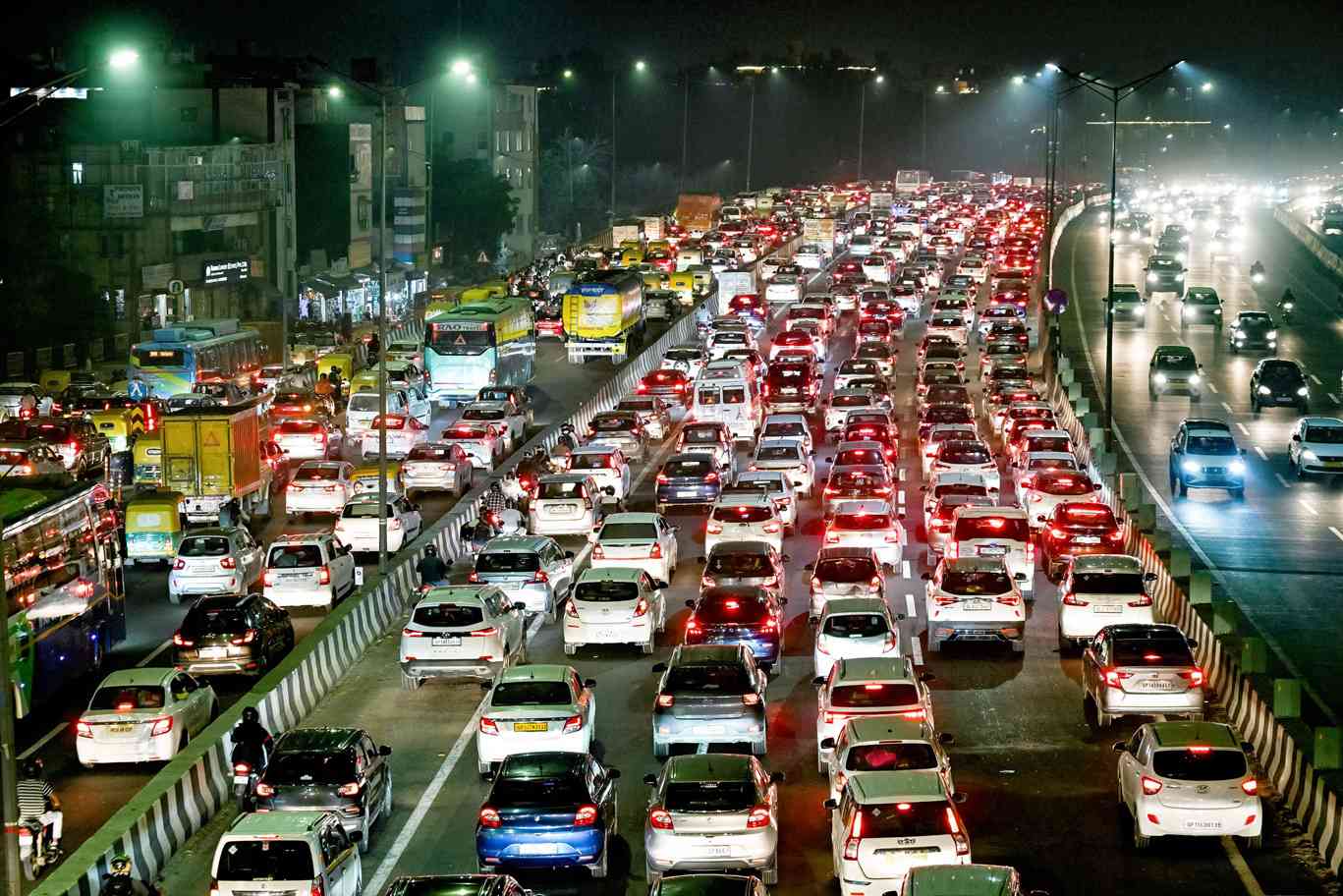
“While CAQM does discuss the transport sector, these discussions must be enhanced to reflect that the city cannot afford to continue to keep buying more personal vehicles,” said Sunil Dahiya, founder and lead analyst at Envirocatalysts, a Delhi-based consultancy that works on environment and climate. He argued that the commission, in coordination with city authorities, “needs to have a more long-term vision of how the city should prioritise mobility of people over mobility of vehicles”.
Even when the CAQM has issued directions related to personal vehicles, the measures have often stalled owing to a lack of political will to implement them.
For instance, in July, it sought to impose a ban on the sale of fuel to overage vehicles – specifically, diesel vehicles that were more than 10 years old and petrol vehicles that were more than 15 years old. In response, the Delhi assembly’s leader of opposition, Atishi from the Aam Aadmi Party, called the move an “all-out attack on the middle class”, and asked the chief minister, Rekha Gupta, to move against it. In August, the Delhi government took the matter to the Supreme Court, which stayed the direction.
Experts note that the shift towards private vehicles over the years is unsurprising given that policies have tended to favour their owners.
For instance, a 2025 study by the Centre for Science and Environment found that bus operators in Delhi paid five times more vehicular tax on a per-passenger basis than private vehicle owners, “despite their low emissions per passenger, considering their role in public transportation”.
It arrived at this conclusion by calculating emissions for different kinds of vehicles, adjusting these values for the number of passengers they carried, and accounting for the fact that private vehicle owners pay one-time taxes, while public transport vehicles pay annual taxes. Over a ten-year period, the study found that a bus paid a tax of Rs 2,199 for each passenger it had the capacity to carry, whereas a car owner paid Rs 443 and a two-wheeler owner paid Rs 189.
The study concluded that “taxes need to be aligned with emissions and road usage, based on the polluter pays principle” and that private cars needed to be taxed at higher rates to encourage a shift to public transport.
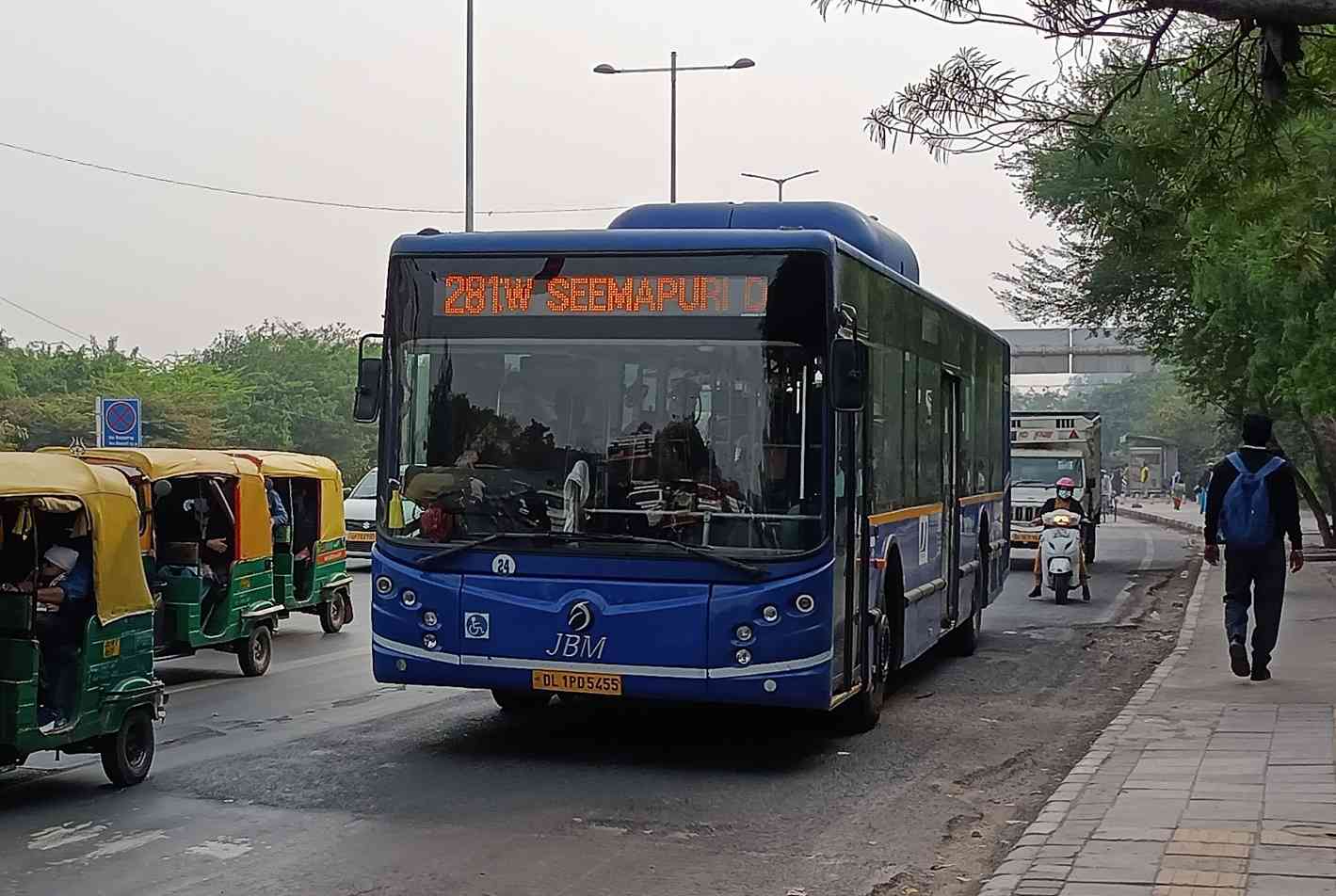
Indeed, experts note that efforts to disincentivise car ownership have been limited, and so have been ineffective. For instance, in December 2024, the CAQM directed urban local bodies that determined vehicle parking fees in Delhi to increase these fees to discourage private transport. But in the discussion, it specified that the increase was only to be enforced after the invocation of GRAP stage II measures, which come into force when the air quality falls into the “very poor” category.
Implementing this measure in a limited fashion is a flawed approach, experts argue. “Increasing parking charges is a silver bullet,” said Rahul Goel, assistant professor at IIT-Delhi, who researches transportation. “This measure should be the norm, and not linked with GRAP.”
Further, he explained, it needed to be accompanied by broader plans for parking, including designating parking areas clearly and setting higher rates for locations with higher demand for space, such as markets.
But efforts to implement broader increases to parking charges through the year have failed. In March, the Municipal Corporation of Delhi rejected a proposal by its own executive wing to double parking rates. “We cannot put such a heavy burden on car owners,” said Mukesh Goyal, an AAP politician, leader of the house in the corporation.
Other attempts to discourage the use of private cars have also floundered. In 2017, the National Green Tribunal ordered the Delhi government to create a policy under which an individual or company that registered a second vehicle would pay higher registration fees and road taxes – but the transport department did not implement this order, a report of the comptroller and auditor general found.
Recent years have seen authorities attempt to take more stringent measures – in 2020, for instance, the Delhi government ordered that only vehicles that met BS-6 standards, and thus emitted lower levels of pollutants, would be allowed to be sold in the city.
But even this period has seen a greater emphasis on actions against commercial vehicles. In March, the CAQM announced a blanket ban on commercial vehicles that did not meet this standard from entering Delhi from November 1 onwards.
An official of the CAQM, who requested anonymity, explained that in issuing this direction, the body took into consideration their general understanding of the most serious sources of pollution. “The general perception is that compared to personal vehicles, these commercial vehicles are not serviced on time and hence release more smoke and contribute to pollution,” said an official of the CAQM who requested anonymity.
But this view ignores the fact that non-commercial cars of lower standard continue to dominate Delhi’s streets.
In response to queries from Scroll about its relatively limited focus on vehicular pollution, the commission noted that apart from issuing directions on enhanced parking fees for vehicles and phasing out older vehicles, it had also created a consultative group that included members from The Energy and Resources Institute and the Council on Energy, Environment and Water to review electric mobility policies, “identify gaps” and prepare a road map for “accelerating the transition to e-mobility”.
It added that it had also formed a “Knowledge Forum for Transport Sector” which would hold regular meetings to “deliberate on issues related to the sector and emerging technologies for controlling emissions from Transport sector”.
Some car owners in Delhi agree that there is a need to shift away from the use of private cars, and that unchecked air pollution constitutes a serious social injustice.
“I am very well aware that the car we are using is damaging the health of a child who will perhaps never own a car themselves,” said Bhavreen Kandhari, a clean air campaigner with Warrior Moms, a network of mothers across India.
Kandhari considers charging a congestion tax to car users, as is common in other countries, a fair measure. But, she added, “For citizens to reduce car use there has to be enough availability of alternate options through public transport, which is currently lacking.”
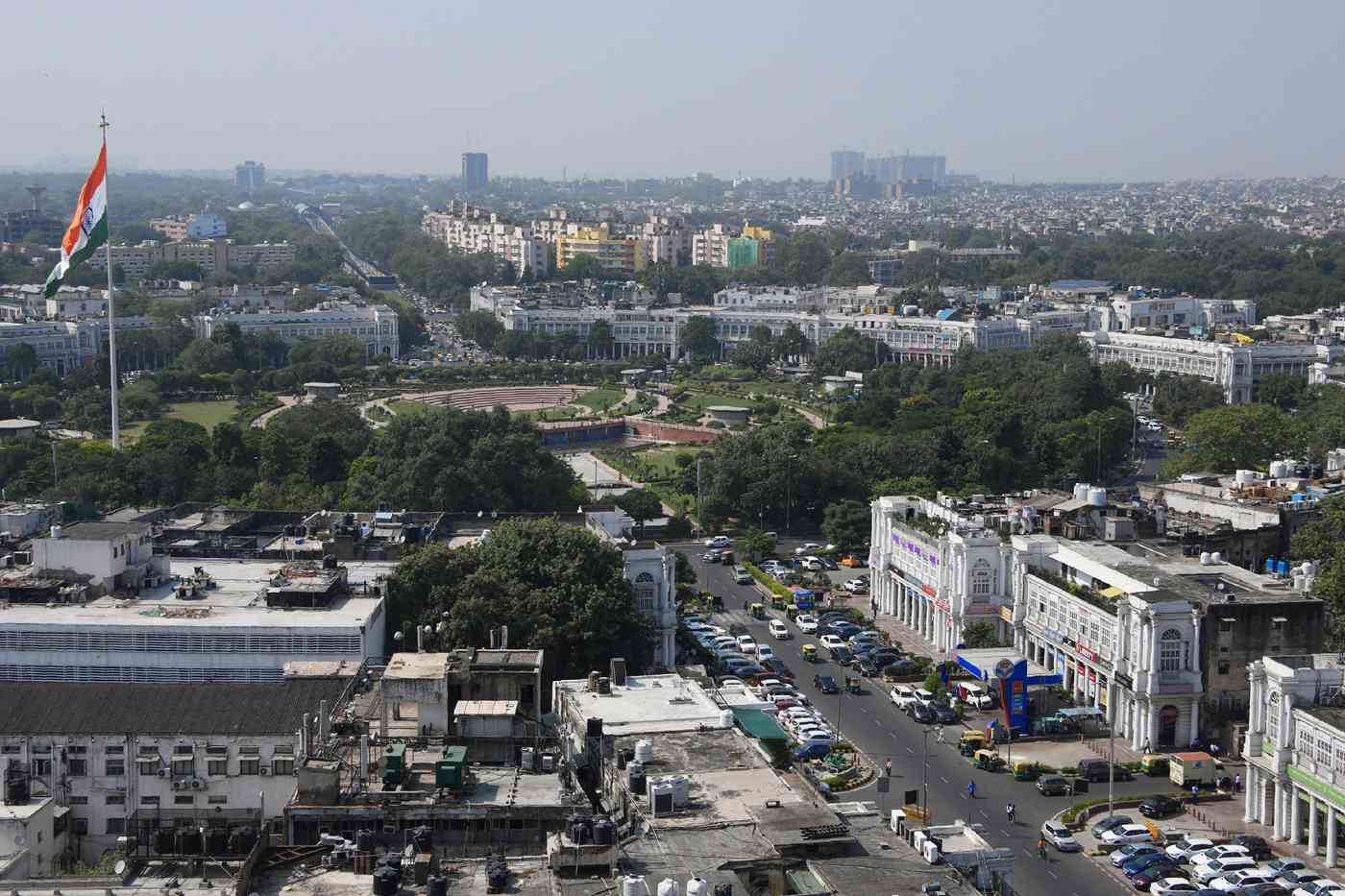
Many, however, point out the challenge is not just infrastructural – rather, public policy needs to incentivise behavioural change to enable a shift from private vehicles to public transport.
But the discussion on tackling pollution in Delhi, experts argue, has been too narrowly focused on ideas such as ensuring vehicles run on clean fuels, and other technological interventions.
“India has an obsession with using technology,” said Goel. “All progressive traffic emission policies in Delhi have been purely technological.” He listed out several policy measures and changes that the city had seen in this regard – such as the shift to BS-6 standards and various subsidies offered to those buying electric vehicles.
The minutes of the CAQM meetings record other such discussions that are focused on technological changes and fuel policies. For instance, in November 2022, the commission directed that only autorickshaws that ran on CNG or were electric were to be registered from 2023 onwards, and that diesel ones were to be phased out completely by 2026 in Delhi-NCR as well as in Haryana, Uttar Pradesh and Rajasthan.
The commission also discussed the question of “cleaner mobility” in services provided by motor vehicle aggregators, and delivery service providers, including e-commerce companies. In a direction this June, it noted that vehicle utilisation by these companies “in terms of running kilometers is quite high”. As a step towards curbing the pollution they caused, it directed that only CNG and electric three-wheeler autorickshaws were to be henceforth inducted into the existing fleet of vehicles. Further, it directed that no such vehicles that ran purely on diesel or petrol were to be inducted into existing fleets from 2026 onwards.
Such technological shifts will not amount to much if the overall number of polluting vehicles on the road continues to increase, experts say.
“More than electrification and shift to cleaner fuels, emission-saving is possible when there is a shift to public or shared vehicles,” said Himani Jain, a fellow at the Council of Environment Energy and Water who specialises in the transport sector, while responding to a question from Scroll during a roundtable on air quality in early October. She added that evidence from across the world has shown that such a shift would only result from imposing restrictions on or disincentivising private vehicles.
The problem is not only one of inefficacy – past experience has shown that sweeping technological interventions that fail to take larger factors into consideration can have serious adverse effects.
In his book Courting the People, Anuj Bhuwania recounted a 1998 Supreme Court order that all public transport be converted to run on CNG by April 2001. He wrote that this led to a sudden drop in available public buses and an “exponential increase” in private transport. Thus, he argued, the court’s actions to reduce the carbon emissions of public transport were “more than compensated for by the rise of private vehicles”.
Data also bears this out – the annual average PM 10 levels between 2002 and 2007 reduced by about 16%. However, since then, these levels increased dramatically, by 75% – parallel to the growth in vehicle numbers, as much as 97% between 2002 and 2012.
A 2014 report by the Supreme-Court-appointed Environment Pollution (Prevention and Control) Authority, the predecessor of the CAQM, noted: “The deadly combination of growing pollution especially from vehicles and delayed action has enhanced public health risk in the city.”
The government’s overwhelming focus on the needs of private vehicle owners is also apparent in other ways. For instance, Delhi’s economic survey for 2023-’24 provides a glimpse of the city’s disproportionate road development in comparison to facilities for pedestrians – in a section on “road infrastructure” it lists just five foot bridges for walkers across the city, but 14 flyovers and road widening projects at congestion points like Sarai Kale Khan, Ashram and Anand Vihar to “allow vehicles move more quickly” and “reduce traffic congestion”.
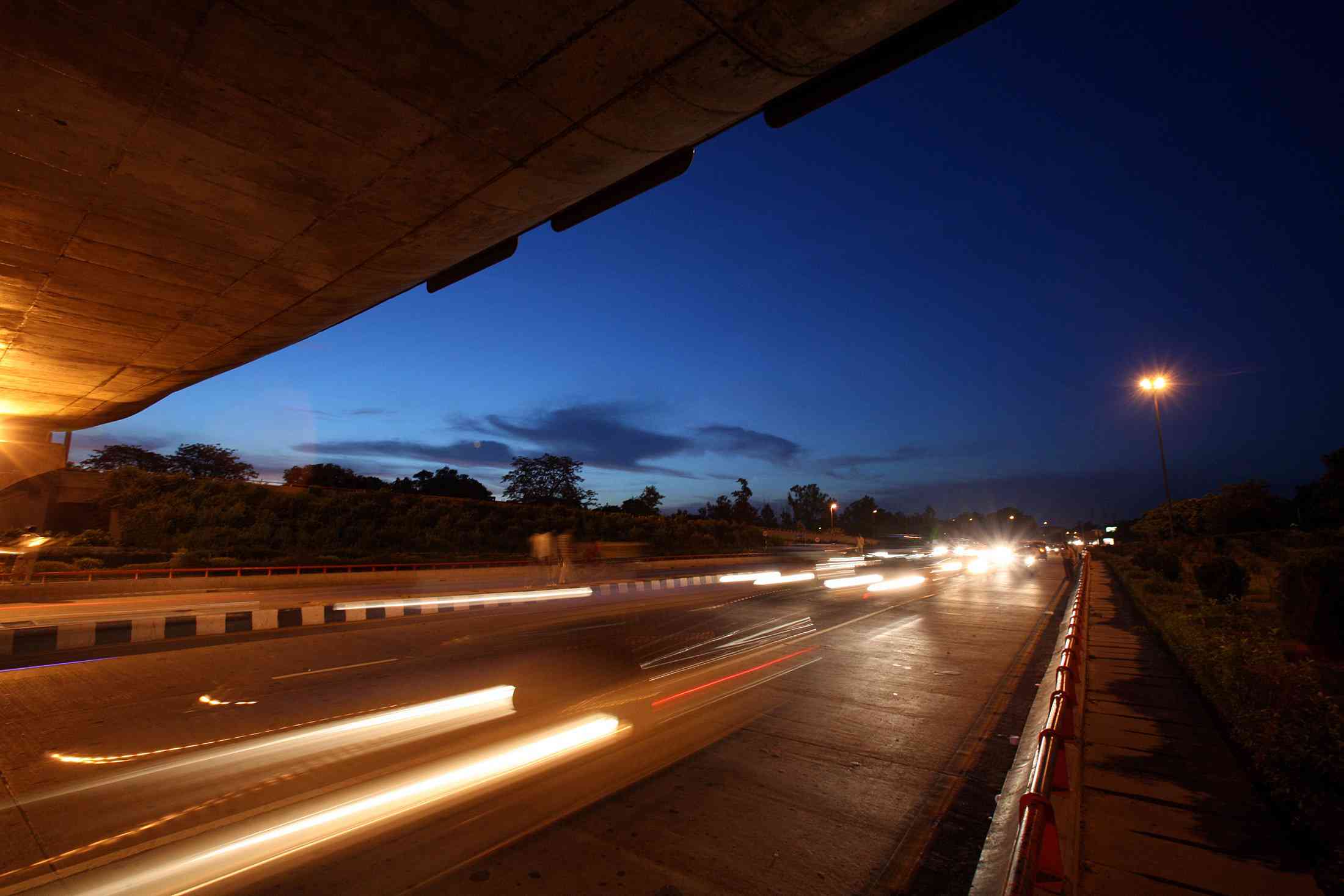
Kandhari argued that such flyovers only support the ecosystem for more private vehicles. “The current city development with flyovers and roads is built for cars, and so encourages more car use,” she said.
Scroll emailed the Delhi government, seeking responses to criticisms that it had focused too heavily on car-users to the relative neglect of walkers. This story will be updated if it responds.
Experts also argue that for the CAQM to have a better understanding of the impact of its directions, it would need to work towards tracking the situation more widely through a greater number of indicators than it currently uses. At present, CAQM minutes show that the commission seeks data from the government departments on the number of vehicles running without a pollution-under-control test, the number impounded or fined for this violation, and the number of polluting trucks and freight vehicles stopped from entering Delhi-NCR.
Such indicators “do not give an enhanced understanding of whether CAQM or any such body is being able to reduce pollution and emission loads in geographies under their control”, said Dahiya.
He argued that the commission needed to consider more indicators that mapped progress towards emission reduction targets, such as a reduction in petrol and diesel consumption, and shifts in vehicle use from private to public vehicles.
But he added that while the CAQM can seek this data from state departments across the NCR, much would depend on the departments themselves, since they bear the responsibility of collecting this data.
A key problem that stymies efforts to combat air pollution in the city, experts argue, is interventions from higher authorities that do not adequately take empirical evidence into consideration.
In the 1998 CNG conversion case, for instance, the Supreme Court had appointed the senior lawyer Harish Salve as its amicus curiae. In his book, Bhuwania pointed out that the court relied on him for research and that “only a relatively small number of stakeholders actually played much of a role in the deliberations”.
The court’s final decision was “immensely controversial because the science behind it was severely contested, with two committees giving diametrically opposite reports”, he wrote.
In the same case, the court also ordered that the number of autorickshaws on the city’s roads be frozen and that no new permits be granted for the vehicles.
In 2009, when a lawyer for the autorickshaw union argued that rickshaws had all shifted to a cleaner fuel, and that therefore the ban on new permits should be lifted, Salve argued that an increase in rickshaws would lead to greater congestion of roads – without acknowledging that the rise in the number of other vehicles was also contributing to the problem. “No authorities were cited by Salve and this was an extempore objection by him,” wrote Bhuwania, who was present in the court during these proceedings.
“Judiciary making these decisions is problematic because while the issues are legitimate, the people the court talks to while making these decisions are not domain experts,” said Goel.
He added, “When decisions come from the court, it leaves no space for stakeholder engagement.”
Inviting the public to provide inputs to proposed policy decisions can help involve them in such decision making, a step that has been absent in most major decisions on dealing with Delhi’s air pollution, he argued.
Goel recounted that he had seen a similar problem play out when it came to the question of overaged vehicles, which has its origins in a 2014 case in the National Green Tribunal.
That year, Goel was part of a team that was consulting with the environment ministry on the National Green Tribunal’s hearings. He explained that he used IIT Delhi studies to cite data that showed that the retirement of these vehicles would have a minimal impact on pollution of the city.
The court however, rejected these findings and ruled that petrol cars over 15 years and diesel cars over 10 years would not be allowed to ply in the city. Its decision suggested to Goel that “oftentimes, these decisions are made arbitrarily without any empirical back up”.
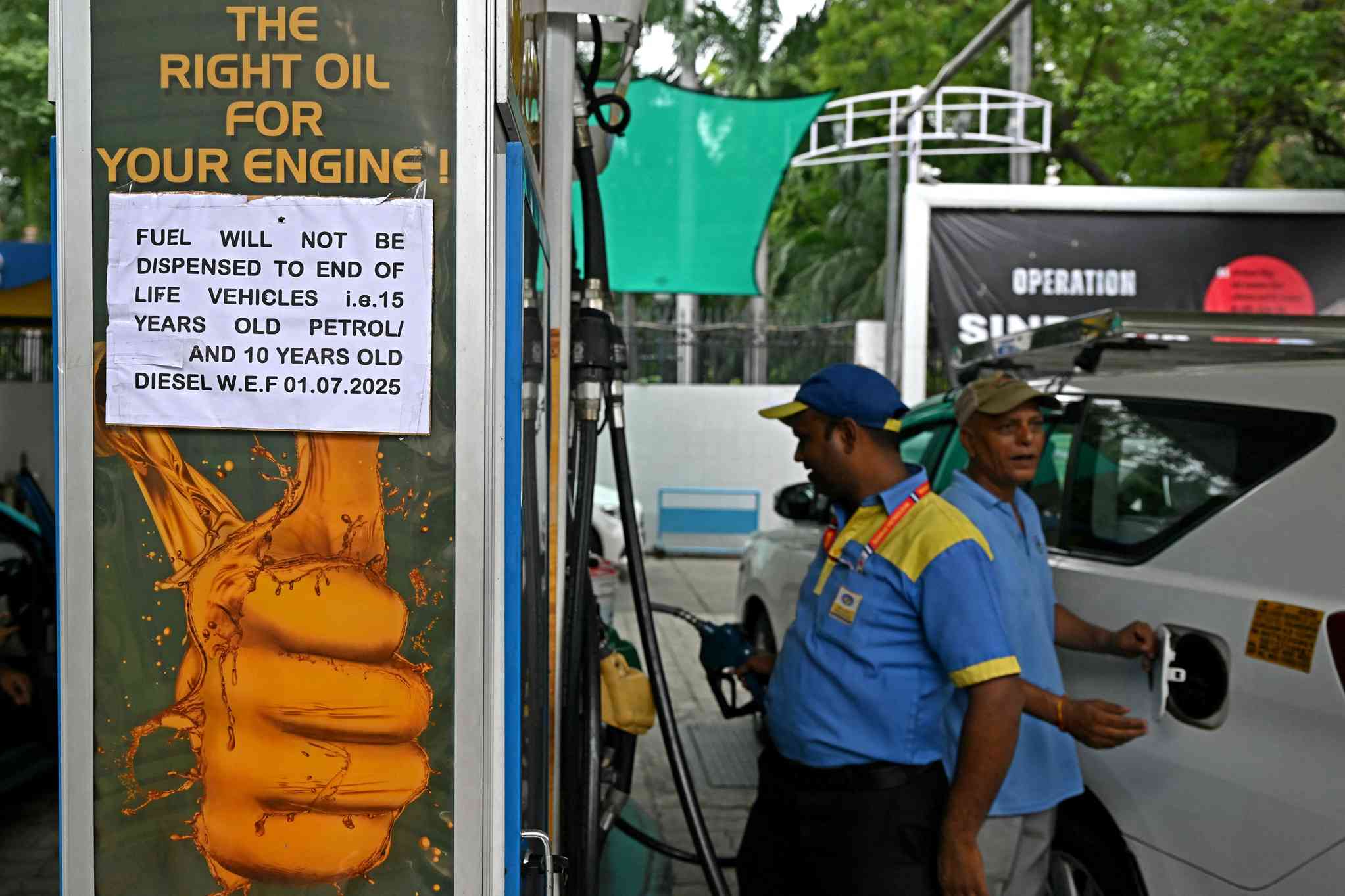
(The Centre for Science and Environment, however, presented a counterview to the IIT study in 2015, saying that it had “played down” the risk exposure of deadly vehicular pollution to “protect old cars”. Now, however, the centre’s stand on the question of older cars appears to have become more nuanced. In July, it stated that it had not “advocated for measures like mandatory age cap on personal vehicles”, but had rather “advocated a range of measures”, such as identifying specific unfit vehicles regardless of age and removing them from the roads.)
Goel also argued that sweeping judicial interventions also run the risk of “undermining other institutions in the city”.
For instance, he explained that it had long been the responsibility of Pollution Under Control Centres to check the emissions of vehicles and issue them certifications. This system has been known to be riddled with flaws – he noted that it was common knowledge that a vehicle owner can obtain a pollution certificate without having their vehicle checked, by paying amounts as low as Rs 50 at some centres.
Any motivation on the part of the government to fix this system could be undermined by overarching judicial decisions, he argued. “If the court decides that old vehicles based on age should be phased out, then what is the incentive of the transport department to improve their own PUCC systems?”
But apart from such interventions, a more fundamental problem with efforts to tackle air pollution is a lack of attention to working towards crucial long-term changes. The CAQM official who spoke to Scroll noted that the commission had no plans at present to change its strategies. “At present, there is no directive in plan to reduce the number of personal cars on Delhi’s roads,” said the CAQM official. “For personal cars, the commission’s focus has been on moving to cleaner fuels.”
📰 Crime Today News is proudly sponsored by DRYFRUIT & CO – A Brand by eFabby Global LLC
Design & Developed by Yes Mom Hosting


